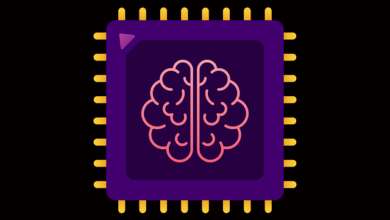Google’s Role in Smart Cities: Building Sustainable Urban Environments

Have you ever wondered how technology can transform our cities into smarter, more sustainable places? Well, look no further than Google. As one of the leading tech giants, Google is playing a pivotal role in shaping smart cities and building sustainable urban environments.
So, what exactly does Google bring to the table? The answer lies in their innovative technologies and forward-thinking initiatives. Through projects like Sidewalk Labs, Google aims to create cities that are not only efficient but also environmentally friendly.
One of the key aspects of Google’s involvement in smart cities is data collection and analysis. With its vast array of services, Google collects massive amounts of data on various aspects of city life. From transportation patterns to energy consumption, this data provides valuable insights that enable city planners to make informed decisions.

But it doesn’t stop there. Google’s expertise in artificial intelligence and machine learning allows them to harness this data effectively. By analyzing patterns and trends, they can develop predictive models that help optimize resource allocation and improve overall city operations. This means smarter traffic management, efficient waste management systems, and enhanced energy usage.
In addition to data-driven solutions, Google is also investing in renewable energy. They have made significant commitments to powering their operations with renewable sources and have even developed projects focused on renewable energy generation for entire communities. By promoting clean energy, Google is making strides towards creating sustainable urban environments and reducing carbon footprints.
Furthermore, Google’s efforts extend beyond technology and energy. They actively contribute to community development through educational programs and partnerships. By empowering individuals with digital skills, Google is equipping citizens to thrive in the digital age and participate in the innovation that smart cities offer.
Google’s role in building sustainable urban environments is undeniable. Through data analysis, artificial intelligence, renewable energy initiatives, and community development efforts, they are paving the way for smarter, greener cities. By harnessing the power of technology and innovation, Google is shaping a future where cities are not only efficient but also environmentally conscious. So, next time you marvel at the advancements in your city, remember that Google’s touch may be closer than you think.
Google’s Revolutionary Approach: Transforming Urban Landscapes into Smart Cities
Are you ready to witness a revolution that will reshape our cities as we know them? Brace yourself for Google’s groundbreaking approach, transforming urban landscapes into smart cities. It’s time to immerse ourselves in a world where technology meets urban living, enhancing our everyday experiences.
Imagine a city where every aspect of daily life is interconnected, seamlessly integrating technology into the fabric of our surroundings. Google’s visionary concept aims to create smart cities that optimize resources, improve efficiency, and enhance the quality of life for residents.
Through a network of sensors, data collection devices, and Internet of Things (IoT) technology, Google envisions a city that can respond intelligently to its inhabitants’ needs. From efficient traffic management systems that minimize congestion to smart energy grids that reduce waste, these cities will revolutionize the way we live, work, and play.

With Google’s advanced algorithms and machine learning capabilities, smart cities will have the ability not only to collect massive amounts of data but also to analyze and interpret it in real-time. This invaluable information will facilitate informed decision-making processes, enabling authorities to address challenges proactively and efficiently.
But what does this mean for us, the residents of these future cities? Picture a city where transportation is a breeze, thanks to self-driving cars that navigate flawlessly through intelligent traffic systems. Imagine walking down streets illuminated by smart lighting that adjusts according to the time of day and movement patterns, optimizing energy consumption and promoting safety.
Beyond the realm of infrastructure, smart cities offer immense potential for improved healthcare, education, and environmental sustainability. Real-time health monitoring systems can alert medical professionals instantly, potentially saving lives in emergency situations. Smart classrooms equipped with interactive technology will empower students with personalized learning experiences. And eco-friendly practices integrated into every aspect of daily life will contribute to a greener, more sustainable future.
Google’s revolutionary approach to transforming urban landscapes into smart cities holds the promise of a brighter tomorrow. As this vision becomes a reality, our cities will evolve into living organisms that adapt and respond to our needs. It’s an exciting journey towards a future where technology and urbanism converge, paving the way for a smarter, more connected world.
The Rise of Google’s Smart City Initiatives: Paving the Way for Sustainable Urban Living
Are you tired of the hustle and bustle of city life? Do you dream of a future where technology seamlessly integrates with urban living? Well, look no further because Google’s smart city initiatives are here to pave the way for sustainable urban living. In this article, we will delve into the rise of these groundbreaking projects and explore how they are transforming our cities into greener and more efficient spaces.
Imagine a city where traffic flows smoothly, energy is conserved, and public services are optimized to meet the needs of its residents. That’s precisely what Google aims to achieve with its smart city initiatives. By leveraging cutting-edge technologies, such as artificial intelligence (AI), internet of things (IoT), and data analytics, Google is reimagining urban environments to create a better quality of life for everyone.
One of the key areas Google is focusing on is transportation. Through its partnership with various municipalities, Google is developing innovative solutions to alleviate traffic congestion and reduce carbon emissions. Smart traffic management systems, powered by real-time data analysis, enable cities to optimize traffic flow, minimize delays, and enhance overall mobility. Imagine getting to your destination without being stuck in bumper-to-bumper traffic!
But it doesn’t stop there. Google’s smart city initiatives extend beyond transportation. The company is also committed to creating sustainable energy solutions. By integrating renewable energy sources, such as solar and wind power, into urban infrastructure, cities can reduce their reliance on fossil fuels and promote a cleaner environment. Smart grids allow for efficient distribution of electricity, ensuring that energy is utilized wisely and wastage is minimized.
Additionally, Google is investing in smart buildings that are designed to be energy-efficient and environmentally friendly. These structures incorporate advanced sensors and automation systems to optimize energy consumption, lighting, and temperature control. Imagine living or working in a building that adapts to your needs, maximizing comfort while minimizing energy waste.
Google’s smart city initiatives are revolutionizing urban living. By harnessing the power of technology, these projects are creating more sustainable and livable cities for us all. From smart transportation systems to renewable energy solutions and energy-efficient buildings, the future looks bright. So, get ready to embrace a new era of urban living, where innovation meets sustainability, and our cities become vibrant, eco-friendly hubs of progress.
Harnessing Innovation: Google’s Cutting-Edge Technologies Spearheading Smart Cities
Picture a city where everything seamlessly integrates, from traffic management and energy consumption to waste disposal and public safety. It sounds like something out of a sci-fi movie, right? Well, thanks to Google’s cutting-edge technologies, this futuristic vision is becoming a reality in many smart cities around the world.
With a relentless focus on innovation, Google has been at the forefront of developing groundbreaking solutions that propel urban environments into the digital age. Their commitment to harnessing technology for the betterment of society has resulted in a range of initiatives aimed at creating smarter, more sustainable cities.

One such initiative is Google’s investment in connected infrastructure. By leveraging advanced data analytics, machine learning, and artificial intelligence, Google is able to optimize the performance of urban systems. For instance, by analyzing real-time traffic data, they can identify congestion points and suggest alternative routes to alleviate traffic jams. This not only saves time for commuters but also reduces carbon emissions and enhances overall mobility.
Another area where Google is driving innovation is in renewable energy. With their expertise in solar power and energy storage, they are working towards making cities greener and more self-sustaining. By integrating smart grids and using predictive algorithms, Google enables efficient energy distribution and helps cities maximize their use of renewable resources. This not only reduces reliance on fossil fuels but also lowers electricity costs for residents and businesses.
When it comes to public safety, Google’s technological advancements are second to none. Through their smart surveillance systems, they employ state-of-the-art image recognition and video analytics to detect potential threats and respond swiftly. Additionally, they facilitate effective emergency response by providing real-time information to authorities and enabling efficient coordination during crisis situations.
Google’s cutting-edge technologies are spearheading the transformation of conventional cities into smart, interconnected urban hubs. By harnessing the power of innovation, they are revolutionizing how we live, work, and interact with our surroundings. From optimizing urban systems to promoting renewable energy and enhancing public safety, Google is paving the way for a more sustainable and efficient future. So, keep an eye out for these groundbreaking advancements as they continue to shape the cities of tomorrow.
Building the Future: How Google’s Tech Integration is Revolutionizing Urban Sustainability
In today’s rapidly evolving world, the need for sustainable urban development has become more critical than ever. As cities continue to grow and face various challenges, companies like Google are stepping up to drive positive change. With their innovative tech integration, Google is revolutionizing urban sustainability and paving the way for a greener and more efficient future.
At the heart of Google’s efforts lies a commitment to harnessing technology to address environmental issues. By leveraging their expertise in data analytics, artificial intelligence (AI), and machine learning, Google is empowering cities to make informed decisions and optimize resource utilization. Through smart city initiatives, Google is creating a synergy between technology and urban sustainability.
One of the key areas where Google is making a significant impact is in energy management. By developing advanced algorithms and utilizing real-time data, Google enables cities to monitor and optimize energy consumption. This data-driven approach helps identify inefficiencies, reduce carbon emissions, and enhance overall energy efficiency. Imagine a city that dynamically adjusts its energy usage based on demand, minimizing wastage and maximizing renewable energy utilization.
Transportation is another realm where Google’s tech integration is transforming urban sustainability. Through initiatives like Google Maps and Waymo, the company is revolutionizing how people navigate urban environments. By providing accurate real-time traffic information, optimizing routes, and promoting shared mobility options, Google is helping reduce congestion and emissions. As a result, cities become more accessible, efficient, and environmentally friendly.
Furthermore, Google’s commitment extends beyond energy and transportation. Their integration of technology encompasses waste management, water conservation, and even urban agriculture. By deploying sensors and IoT devices, Google enables cities to better manage waste collection and recycling processes, conserve water resources, and implement smart farming practices. These innovations not only improve sustainability but also create healthier and more livable urban environments for residents.
Google’s tech integration is revolutionizing urban sustainability by leveraging data analytics, AI, and machine learning. From energy management to transportation and various other aspects of urban life, Google’s initiatives are driving positive change on a large scale. As cities continue to face sustainability challenges, Google’s commitment to building a greener future through technology is paving the way for a more sustainable and resilient world.




